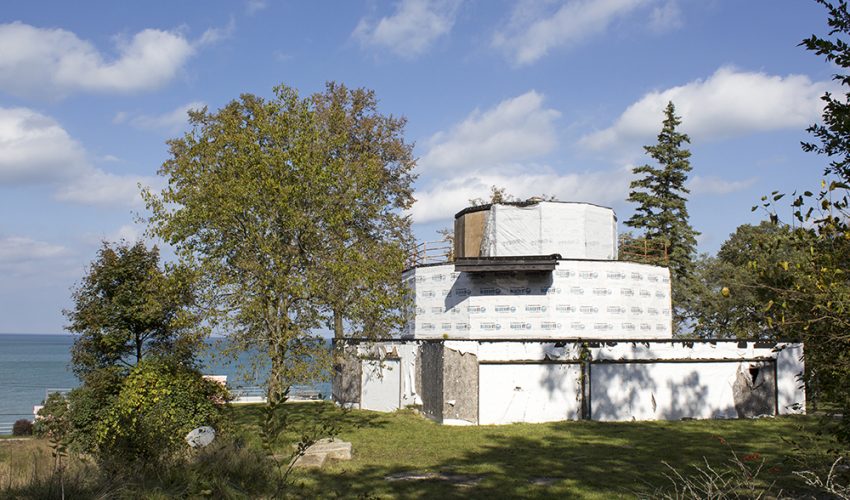NEWS
Hope for the House of Tomorrow
With the support of $2 million from the Great American Outdoors Act funded through the U.S. Department of the Interior, the future of the House of Tomorrow looks bright once again.

Brighter Tomorrow
Central air conditioning. An innovative open floor plan. A hangar for the family airplane. When it debuted at the 1933 Century of Progress World’s Fair in Chicago, the 12-sided House of Tomorrow offered a hopeful vision of the future to millions of fairgoers that came to see how science and technology could improve everyday living.
Architect George Fred Keck’s groundbreaking design for the House of Tomorrow incorporated floor-to-ceiling glass walls, prompting media to name it “America’s First Glass House.” The extensive use of glass predated Mies van der Rohe’s Farnsworth House and Philip Johnson’s Glass House and inspired Keck to explore harnessing solar energy in his future work.
After the fair ended, developer Robert Bartlett shipped the House of Tomorrow and other exhibition homes by barge and truck to Beverly Shores, Indiana, to serve as the attention-getting centerpiece of a resort community he hoped to develop. The properties remained in private hands until the land they occupied became part of the Indiana Dunes National Park in the ’60s and ’70s. Homeowners were allowed to stay for specified periods with little incentive to maintain the unique properties, and the homes suffered.
To save the unique enclave, in the 1990s Indiana Landmarks proposed an ingenious plan: leasing the properties from the park and then subleasing them to tenants who could restore them. It’s a strategy that’s saved four of the homes, but the scale, cost, and complexity of rehabilitating the House of Tomorrow put it out of reach for most potential lessees. Significantly altered since its World’s Fair days, the House of Tomorrow has been vacant since 1999. Now, with the support of $2 million from the Great American Outdoors Act funded through the U.S. Department of the Interior, the future of the House of Tomorrow looks bright once again.
Recognizing the House of Tomorrow’s significant architectural legacy, the National Trust for Historic Preservation designated it a National Treasure in 2016 and collaborated with Indiana Landmarks to hire a respected team of architects and engineers to develop restoration plans. bKL Architecture—a firm with a proven track record working on buildings with significant glass features—partnered with Bauer Latoza Studio, which holds significant experience with restoration projects and National Park Service requirements, to develop plans that return the best of the 1933 Keck design while incorporating modern technology and conveniences to make the home livable today.
This fall, the National Park Service opened the project for bidding, aiming to start the first phase of the landmark’s rehabilitation—restoring the structure’s exterior and its concrete slab floors—in the spring of 2024. Once that work is complete, project leaders will determine the scope of interior work and the property’s final use.
This article first appeared in the November/December 2023 issue of Indiana Preservation, Indiana Landmarks’ member magazine.
Stay up to date on the latest news, stories, and events from Indiana Landmarks, around the state or in your area.


